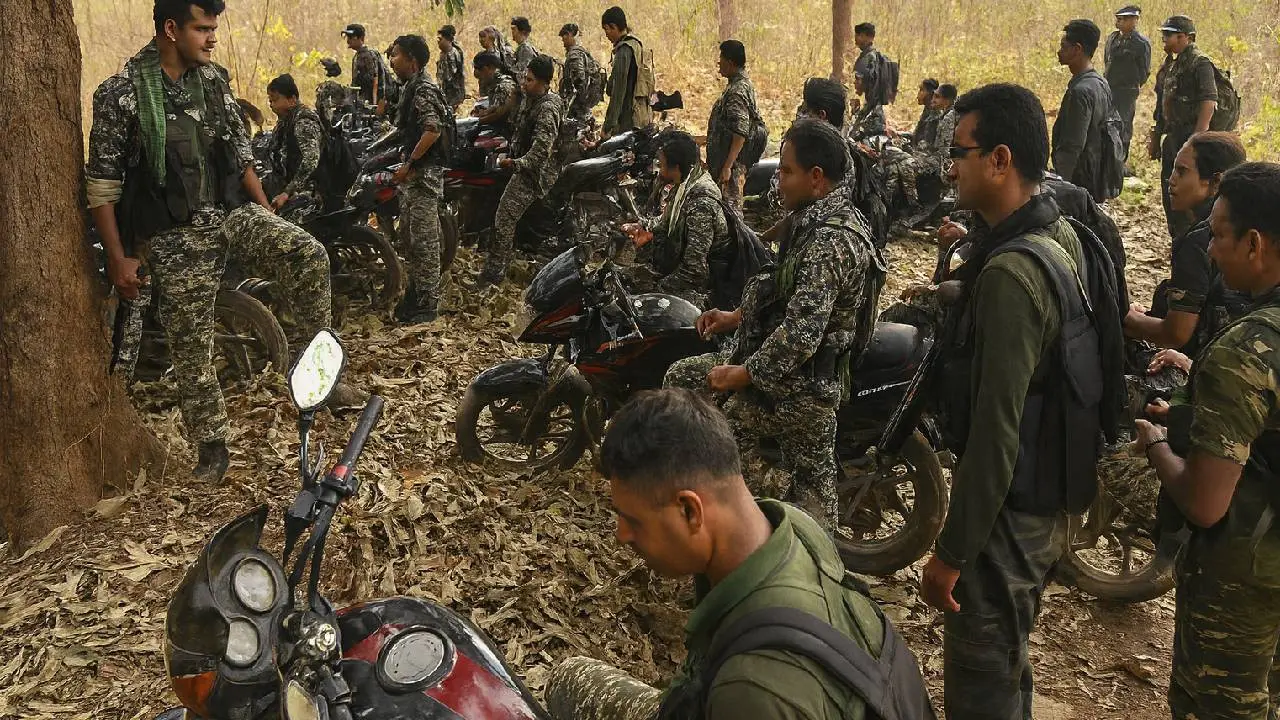
(Credit: OpenAI)
Chhattisgarh: In Bijapur, Chhattisgarh, a large group of Maoist cadres laid down their arms, surprising many observers. They chose to surrender under the rehabilitation programme named ‘Poona Margem, Punarwas se Punarjeevan’. Police officials said the decision was influenced by the government’s development focus and peace initiatives.
Maoists expressed that they wanted to leave behind violence and rejoin the social mainstream. This surrender is being seen as a moral victory for the state’s peace mission. It also marks another important step in weakening Maoist influence in the Bastar region.
The surrenders happened under a scheme run by the Bastar Range police to encourage Maoists back into mainstream life. The initiative focuses on rehabilitation, offering benefits to those who surrender voluntarily. Officials said that the policy provides opportunities for education, employment, and peaceful living.
By highlighting development and welfare, the programme aims to replace violence with social harmony. Maoists who laid down arms admitted they were impressed with this policy. The programme has already encouraged hundreds to surrender since its launch.
The group included five members of the People’s Liberation Guerrilla Army (PLGA) Battalion No. 01 and Companies 01, 02, and 05. Alongside them, seven members of area committees and platoons also gave up arms. Police confirmed three members of the Local Organisation Squad (LOS) joined the surrender.
A militia platoon commander, 14 platoon members, and 20 other functionaries also returned to the mainstream. This mix of senior and lower-rung cadres shows the wide acceptance of the government’s policy. Officials see it as a breakthrough in anti-Naxal operations.
Superintendent of Police Jitendra Kumar Yadav said the surrender was proof of success in government initiatives. He mentioned that Maoists had understood the futility of violence. According to him, peace and development in the region are the main reasons behind their surrender. He added that dialogue and growth were better paths than continued conflict. The SP underlined that the decision was not forced but made voluntarily by the cadres. Security agencies believe this trend will further reduce Maoist strength in coming months.
Since January 2024, officials report that 650 Maoists have surrendered in Bijapur district alone. Alongside this, 196 Maoists have been killed in encounters with security forces. Police also arrested nearly 986 Maoists during operations in the same period. These numbers show a clear decline in Maoist activity in the area.
With each surrender, Maoist influence is weakening. The data highlights how a mix of security operations and rehabilitation is working effectively. Authorities hope this will eventually bring long-term peace to the Bastar region.
The surrender has not only weakened Maoist ranks but also boosted public confidence. Villagers in Bastar now feel safer and more connected to the government. Development projects in roads, education, and healthcare are progressing faster. The state government says these efforts are meant to bridge the gap between people and administration.
By combining policing with welfare, the government is breaking the cycle of violence. Experts believe that sustained development will prevent youth from joining Maoist groups. This shift in mindset is seen as a turning point.
Security experts say that while Maoist ideology still exists, its influence is shrinking. Surrendered cadres accepting peace shows a strong change in ground reality. With more leaders abandoning weapons, recruitment becomes harder for Maoist outfits. The state’s balanced approach of security and rehabilitation appears to be working. Authorities believe that if the trend continues, Maoist activity may end in the near future. For people of Bijapur, this surrender brings hope for a peaceful tomorrow. It could be the beginning of a new era in Chhattisgarh.





Copyright © 2025 Top Indian News
